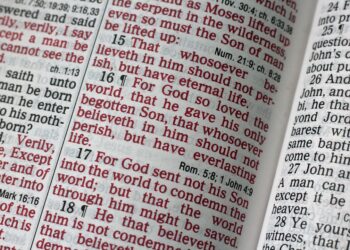Religious Symbols: Unveiling Hidden Meanings and Interpretations
Religious symbols hold a great deal of significance for believers around the world. These symbols often serve as a visual representation of complex religious concepts, teachings, and beliefs. However, the true meanings behind these symbols can sometimes remain hidden to those who are unfamiliar with the religion or its traditions. In this blog post, we will explore some common religious symbols and delve into their deeper meanings, revealing the wisdom and interpretations they offer.
One of the most well-known religious symbols is the Christian cross. At first glance, it may seem like a simple design – a vertical line intersected by a shorter horizontal line. However, the cross holds profound meaning for Christians. It represents the crucifixion of Jesus Christ and his sacrifice for the salvation of humanity. Beyond this, it also symbolizes hope, resurrection, and the triumph of life over death.
Similarly, the crescent moon and star are symbolic in Islam. This iconic symbol is often associated with the Muslim faith, representing the Islamic lunar calendar. Some interpretations suggest that the crescent moon signifies growth and progress, while the star represents guidance and divine light. Together, they evoke notions of a faithful path leading towards spiritual enlightenment.
In Hinduism, the Om symbol is of great significance. Om (or Aum) is considered the primordial sound of the universe, representing the essence of all reality. It encompasses the past, present, and future, signifying both the unchanging divine and the ever-changing world. The symbol comprises three curves, a semicircle, and a dot, representing the physical, dream, and deep sleep states of consciousness, as well as the transcendental state beyond them.
Moving to Buddhism, we encounter the lotus flower symbol. This elegant flower grows in muddy waters but emerges clean and pure, which is seen as an analogy for the spiritual path. The lotus symbolizes enlightenment, purity, and the ability to rise above suffering and worldly attachments. It teaches us that just as the lotus blooms in adverse conditions, we too can find enlightenment amidst the challenges of our lives.
In Judaism, the Star of David is a central symbol. With its distinctive six-pointed shape, it holds deep meaning for the Jewish people. It represents the connection between God and humanity, with the upward-pointing triangle signifying the divine and the downward-pointing triangle symbolizing humanity’s response to God’s guidance. The Star of David reminds us of the importance of our relationship with the divine and the ethical responsibilities we have towards one another.
Native American cultures also possess rich symbolism, with the dreamcatcher being a widely recognized symbol. Traditionally made from woven threads resembling a web, dreamcatchers are believed to filter out bad dreams and negative thoughts, allowing only positive energy to flow through. They serve as a reminder to focus on the positive aspects of life and filter out negativity, contributing to mental and spiritual well-being.
These examples merely scratch the surface of the vast spectrum of religious symbols present across various faiths. It is important to recognize that the interpretation and significance of religious symbols may vary even within a single religion, as believers bring their own personal experiences and understandings to their faith.
Furthermore, it is crucial to approach these symbols with respect and open-mindedness, seeking to learn from the traditions and teachings that they represent. One must also exercise caution against misappropriating or misrepresenting these symbols, as doing so can be disrespectful and insensitive to the deeply held beliefs of others.
Religious symbols have the power to inspire, educate, and bring people together. They offer an opportunity to learn about different cultures and traditions, fostering interfaith dialogue and understanding. Whether one follows a particular religion or not, exploring the deeper meanings and interpretations behind these symbols can provide invaluable insights into the beliefs and values that shape the lives of countless individuals around the world.
In conclusion, religious symbols are not mere visual representations, but rather gateways to spiritual wisdom, knowledge, and understanding. They carry profound meanings and interpretations that often transcend language and cultural barriers. Exploring these symbols with curiosity and respect allows us to tap into the immense well of knowledge and enlightenment that lies beneath their surface.













